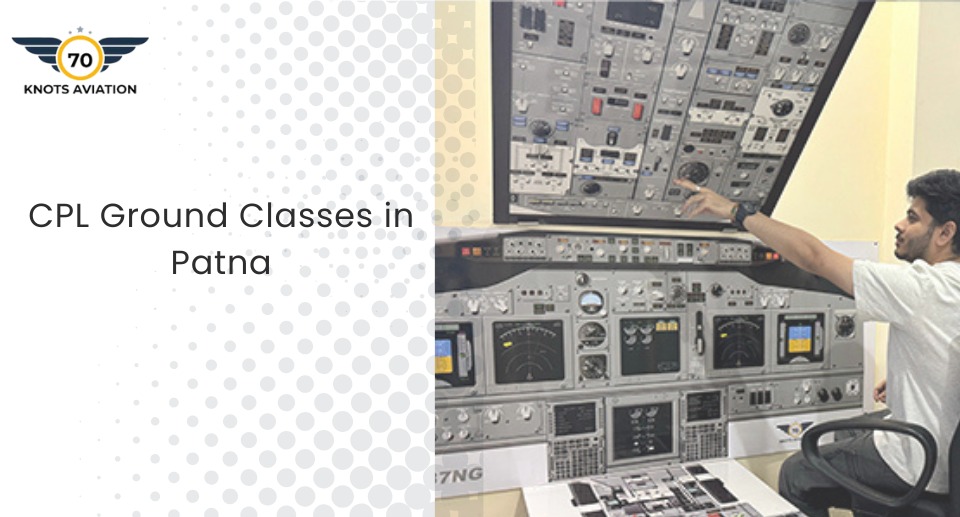The Role of ATC: How to Communicate Effectively with Air Traffic Control
In the aviation industry, effective communication is very important in the operation of aviation procedures. One of the major forms of communication during flight is that between the pilots and Air Traffic Control (ATC). The main objective of ATC is to provide the necessary instructions to the pilots of the aircraft in order for multiple aircraft to operate within the same area and at the same time. For this to be possible ATC and the pilots have to have effective communication. In this blog, we will focus on the work of Air Traffic Control and how to interact with them.
What does ATC stand for?
Air Traffic Control (ATC) is a service that is provided by controllers that have a commanding presence on land and direct the operations of aircraft on land and in the air. Its major objective is to avert any collision of planes and at the same time, ensure that they are able to fly efficiently. All ATC services can broadly be classified into four groups depending on the stage of the flight including ground, tower, approach, and en-route (center) control.
- Ground Control: directs aircraft on the ground except for those on the runway
- Tower Control: manages aircraft that are taking off or those that are landing on the runway
- Approach Control: makes it easier for more than one aircraft to land in a busy airport
- En-Route Control (Center Control): guides aircraft on their long-distance flight while at higher altitudes.
The Importance of Effective Communication with ATC
Reaching out to the ATS in a proper way is very important in terms of safety and efficiency of the flight. Reach out to ATS in a poor manner and well – possibilities are hundreds of scenarios or misunderstandings, delays, and accidents. In order to prevent any misunderstanding, there are various standard operating procedures and set phraseologies that are expected to be adhered to by the pilots. Radio communication not being clear and effective can also lead to wrong actions being taken which can put safety in danger. This is why a deep-reasoned comprehension of the best ways to deal with ATS is an essential quality for any pilot.
ATC Communication: Signs to Keep in Mind
Follow the Radio Communication Standards
Radio us is one of the main means of ATC communication. All the Crew members on board the aircraft and the ATC have to follow some rudimentary principles so that the message is not lost or details are not missed out.
- Wait to Speak: This helps avoid messages being blocked & facilitates easy communication as it removes any possibility of ever speaking while someone else is on a different frequency.
- Phonetic Spelling: During phonetic spelling or using the alphabet use as much corrections as possible in order not to misconstrue the ICAO phonetic alphabet.
- Do Not Cut in: Wait till the controller stops talking otherwise important information gets excluded.
- Speak Clearly and at a Moderate Pace: Don’t rush your words because you may miscommunicate by talking too quickly, or talking too slowly may cut information exchange. Therefore, speak clearly and at a moderate pace.
Master Standard Phraseology
That can be said as military time and there is a high possibility that pilots and controllers can communicate exclusively using these phrases. This assures that all messages are succinctly put across in a similar manner no matter where in the world aviation is being carried out. That is why they must know the standard phraseology. A few of the standard phrases are:
“Roger”: Acknowledgement of a transmission.
“Affirmative”: Yes.
“Negative”: No.
“Wilco”: I will comply (used to acknowledge and agree to instructions).
“Say Again”: Used when the message was not understood, and the pilot requests it to be repeated.
“Standby”: A request for the pilot to wait or hold for further instructions.
Make it Brief and Direct
First, as far as talking to ATC is concerned, do so only when necessary since ATC talk should instead be short and relevant. Phrases that might make the message dense should be avoided, cluttering the text. Responses need to be kept short and unambiguous, so that there are no delays. For example,
Instead of saying, ‘I am on altitude 10,000 feet and requiring to go to 15,000 feet’ say this, ‘on going up to fifteen thousand feet.’
Instead of asking for this, ‘May I have the weather at my destination please?’ just say this: ‘Weather at [airport name] please otay.’
Do Not Overlook any Instructions or Clearances
Most importantly, key instructions or clearances given by ATC are crucial in carrying out various tasks and therefore, should be repeated back when given commands. This is a readback technique for example: after receiving a climbing command to a certain altitude which should be done as his words imply. Therefore, communication such as “climbing to a ten thousand feet then because my call sign is…” ensures both the controller and pilot are on the same page and thus mistakes are not made.
Control Yourself During Debriefing
Feeling a little pressure under the busy or complex airspace is understandable for pilots. Even so, it is always advisable to remain calm and focused. If you do not understand an instruction or need some extra time, you can always say what you understand which is openly communicating. Repeat after me: “Say again” or “Standby.” The Controllers are trained to be under pressure and they will help you anyway possible.
Try Controlling Yourself More Until It Is Natural
ATC good communication is smooth communication and like any other skill this one comes with practice. Radio communication for pilots is crucial and you must practice it constantly, hence, you want to talk on the radio also during flight training. The flight simulator is helpful to everyone since it broadens the use of radio tactics and various air spaces and other such scenarios.
Communicate More With ATC for Better Flight Service
ATC will assist you throughout the flight, and provide guidance should you require it for your flight. If you in doubt about your location or need more details, the information is readily available; many are woefully apprehensive to ask for help when they should have done so already. You could, for instance, tell ATC that certain pilots need traffic advisories, or that others need weather updates. ATC services will assist you in sharpening your perspective during the flight by providing you the adequate knowledge that will help with your decision-taking.
Final Thoughts
In conclusion, It is important to possess effective communication standards with Air Traffic Control to aid in smooth functioning of flights. The use of standard phraseology, radio etiquette, pressure management, and brevity in conversation makes it easier for pilots to communicate with ATC. Pairing this with practice or knowledge of ATC communications should instil confidence and reduce miscommunication when it comes to communication with ATC in general.
Those interested to build on their aviation skills further, 70 Knots Aviation has such resources and training that can be helpful for a pilot to improve his aircraft handling skills as well as the one who’s on the communication with ATC. Every flight involves a number of procedures, and mastering them as a student or even a flying instructor will make you a safer and more capable pilot.
Case in mind, out of the scope of the aviation world, clear communication is key to a successful engagement, in this case engagement to the aviation world.
Utilizing the appropriate communication strategies or further developing your ATC skills right after this engagement will guarantee that your flights are both smooth in experience and in execution.
Happy flying!




